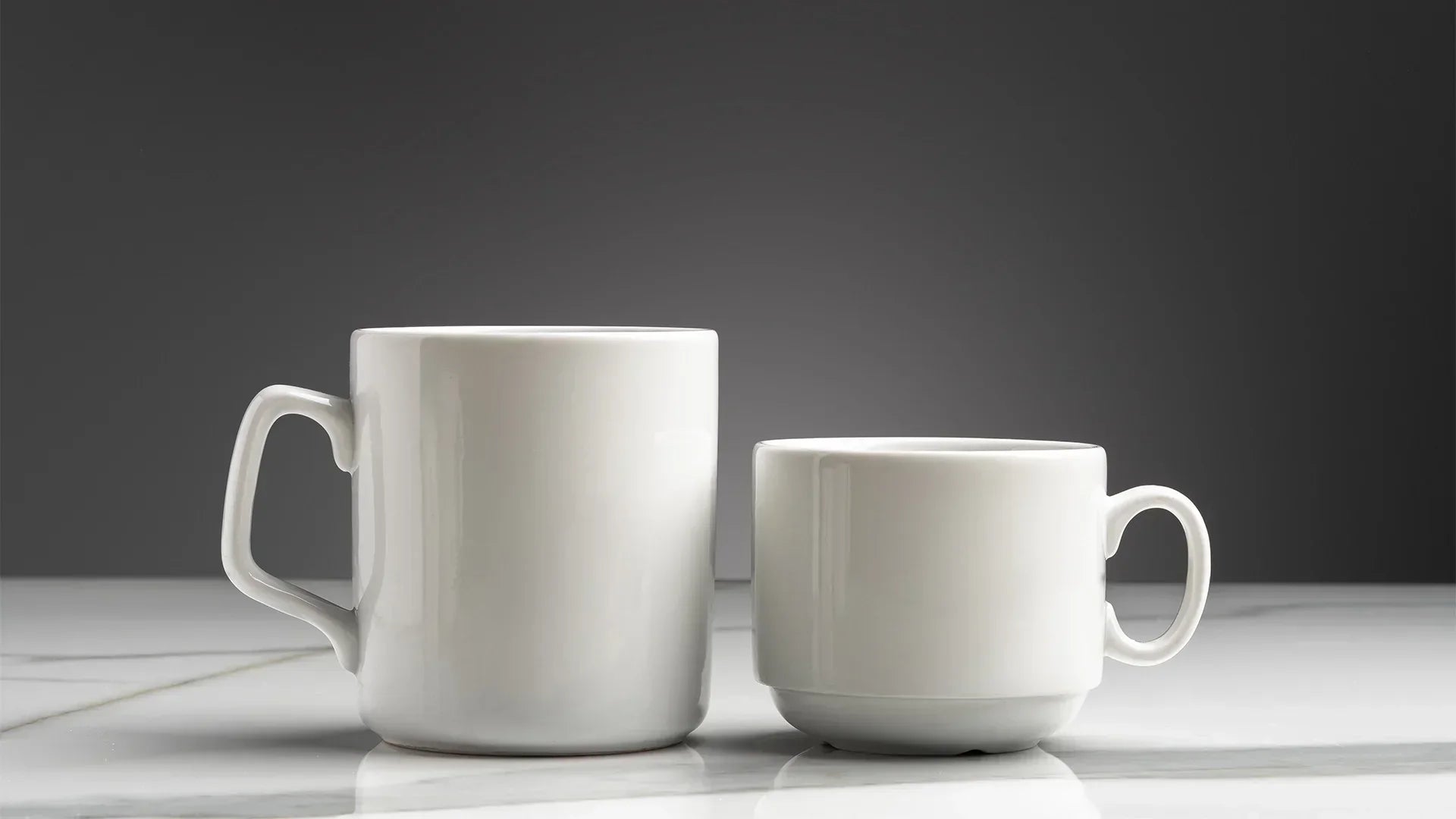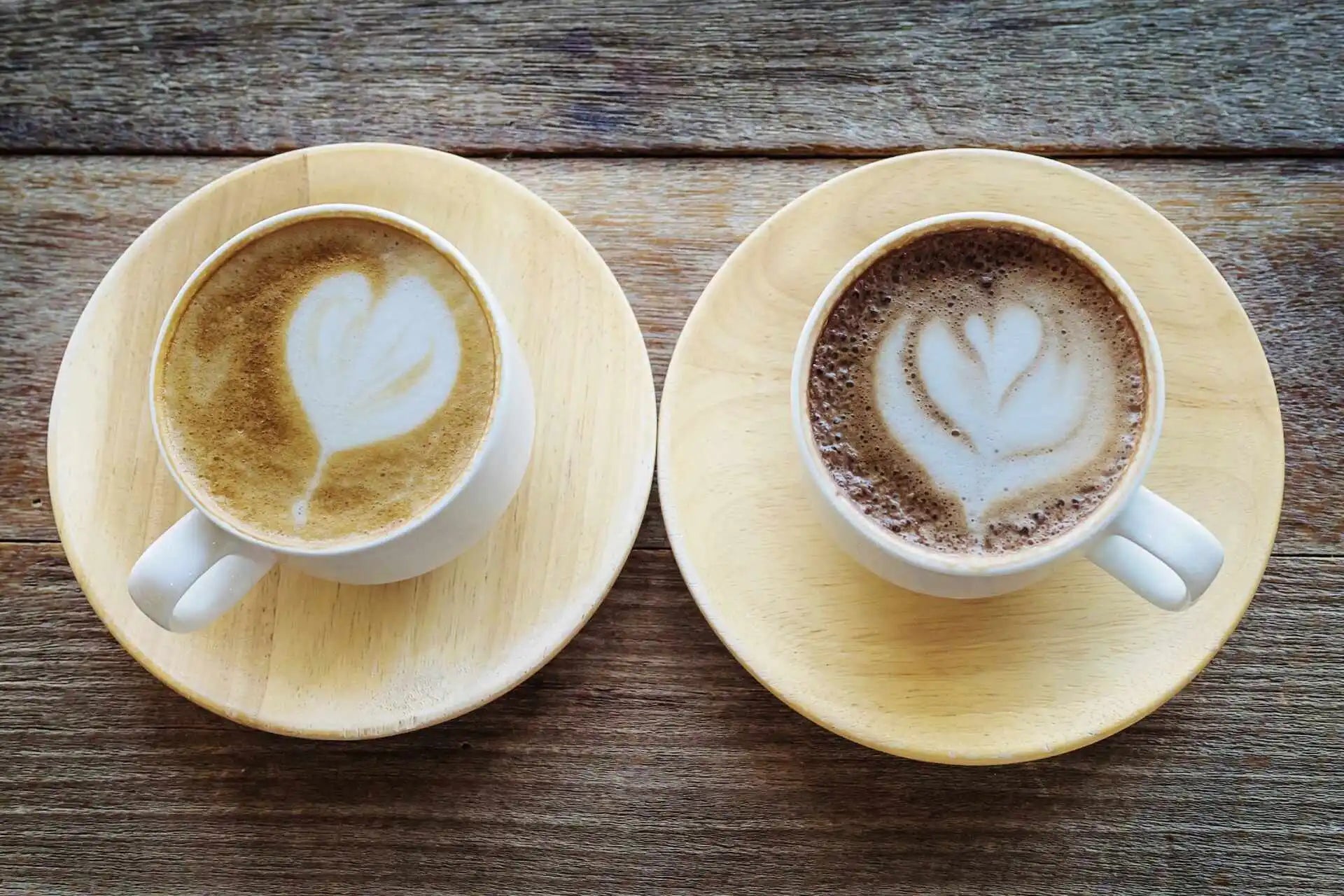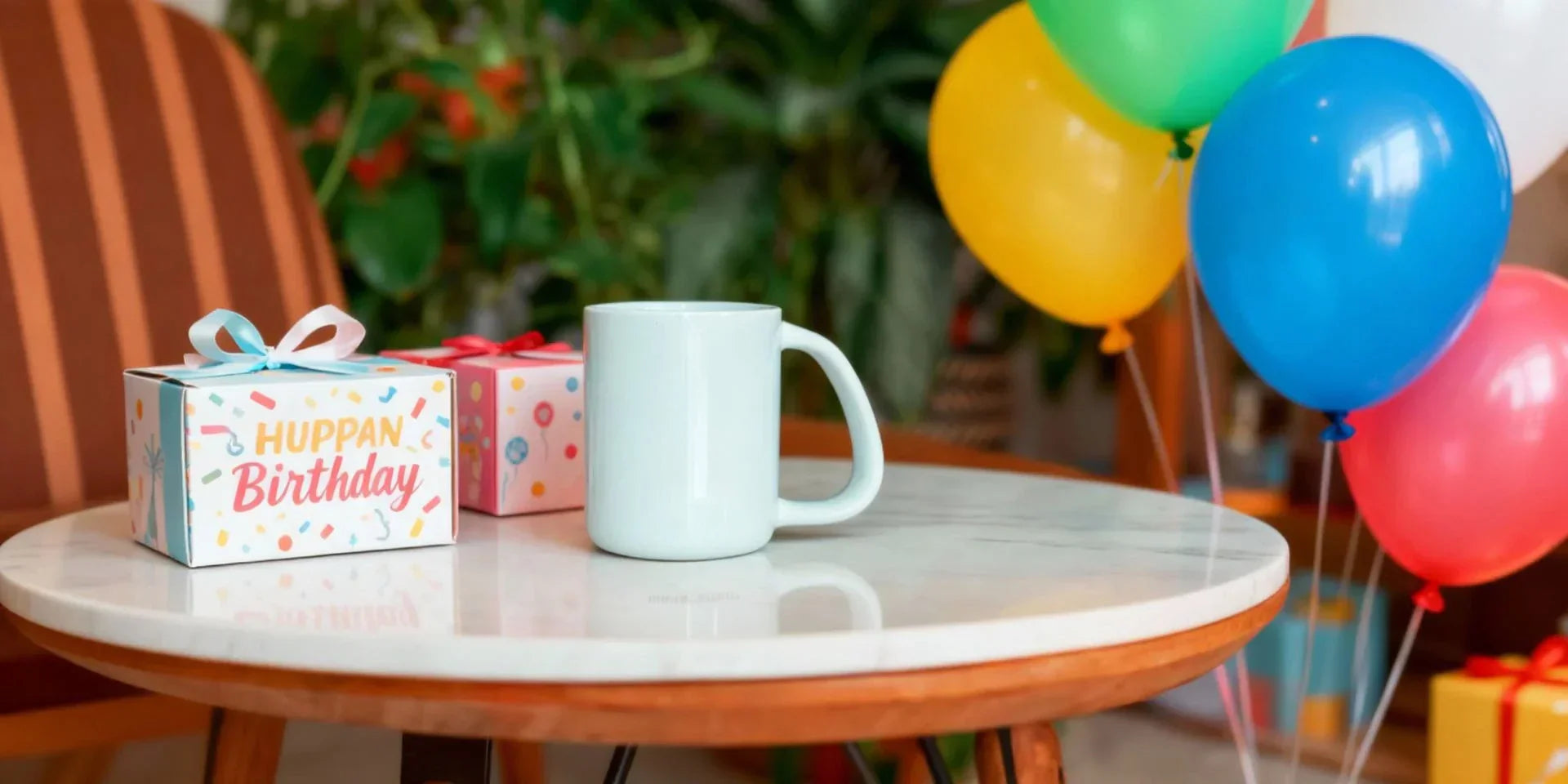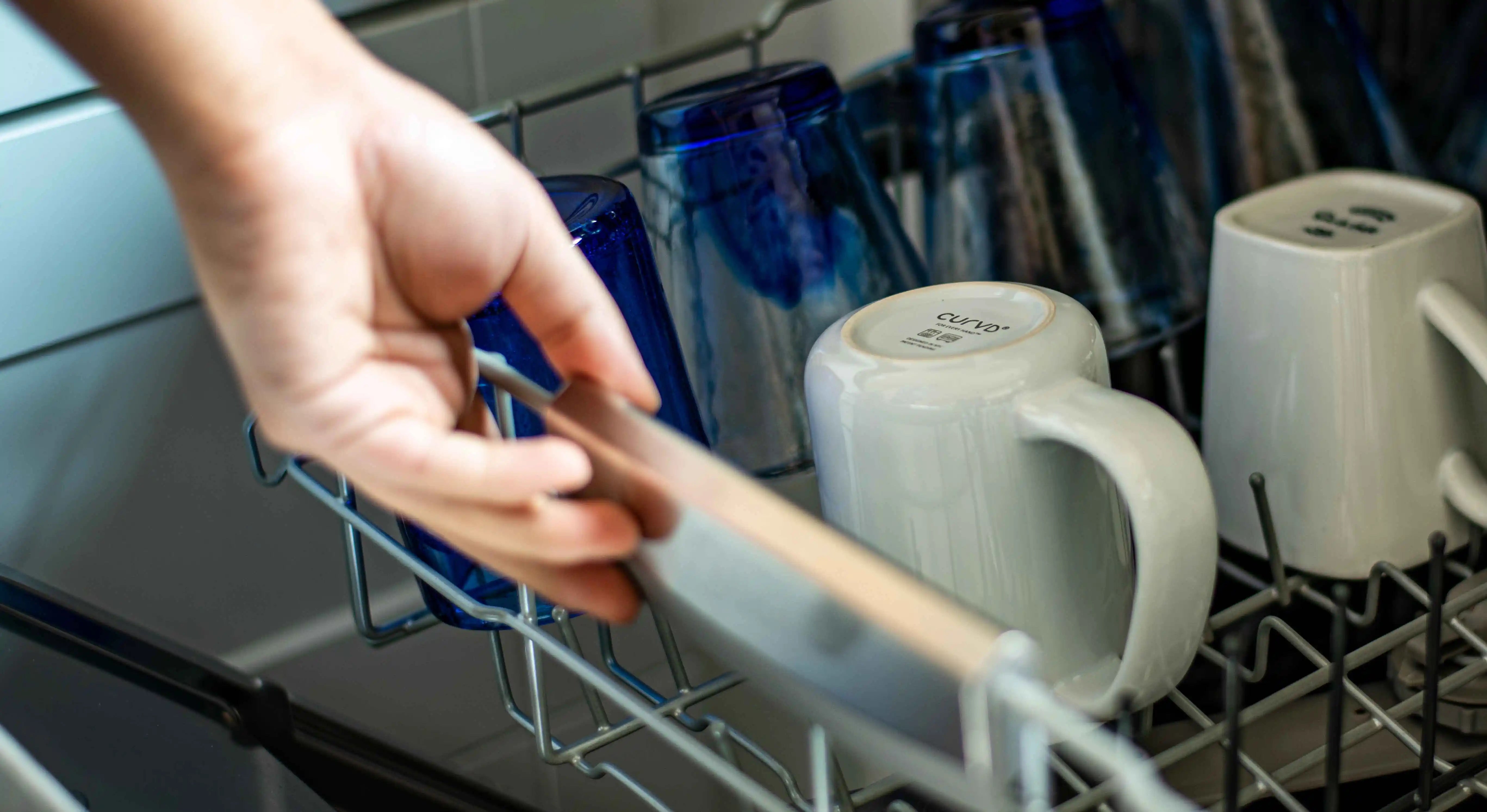The main difference between a tea mug and a coffee mug lies in their design, material, and function. Tea mugs are generally wider with flared rims to help the tea cool slightly and release its aroma, while coffee mugs are taller and thicker to retain heat and preserve the coffee’s warmth for longer. The choice of vessel can be as crucial as the drink itself. While some may use the terms interchangeably, there is a distinct difference between a tea mug and a coffee mug.
This article explores the nuances that set these two apart, from their historical origins to the materials, designs, and innovations that continue to shape them today.
The Historical Evolution of Tea and Coffee Mugs
The journey of tea and coffee mugs from their early forms to modern designs is a fascinating story of cultural expression and technological progress. What began as simple drinking vessels has evolved into symbols of personal style and everyday comfort. Learn more about the evolution of ceramic mugs in our dedicated deep dive.
Ancient Beginnings
The earliest mugs appeared in the Neolithic Stone Age and were carved from bone or wood. These primitive forms lacked handles but marked the beginning of human ingenuity in crafting everyday tools. The invention of pottery around 4000 to 5000 BCE in Greece led to the first ceramic mugs, making them more durable and functional.
The Metal Age and the Introduction of Porcelain
As metalworking techniques progressed, mugs started being made from materials like bronze, gold, silver, and even lead. However, these metal mugs weren't suitable for hot drinks due to their fast heat conductivity. The pivotal shift occurred with the advent of porcelain in China circa 600 CE. Porcelain mugs, characterized by their thin walls and lightweight construction, proved versatile for both hot and cold beverages. This advancement heralded the dawn of the contemporary era for tea and coffee mugs.
The Role of Tea and Coffee in Mug Evolution
The spread of tea and coffee drinking from the East to Europe played a significant role in the evolution of mugs. In Europe, the demand for suitable vessels for these exotic beverages led to the development of more refined and elegant mugs. The English added handles to tea bowls in the early 1700s to protect fingers from the heat, a design feature that has persisted to this day.
Modern Innovations and Trends
In modern times, mugs evolve with lifestyle trends and materials. The rise of travel mugs and tumblers caters to on-the-go drinkers. Material choices expanded to include stainless steel, glass, double-walled ceramics, and more. Curvd’s own blog delves into how small design choices matter in daily rituals in “Creative Ways to Make Every Drink Special.”
Design continues to influence everyday drinking habits, as explored in CURVD’s Why Your Morning Mug Matters More than You Think, which shows how a well-crafted mug can transform a simple daily routine into a meaningful ritual.
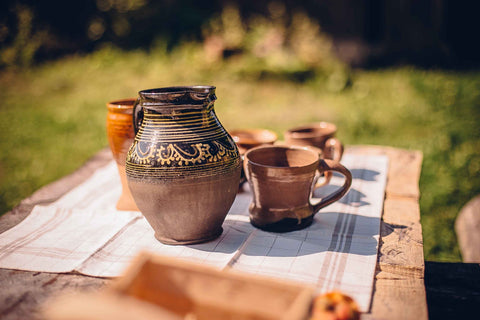
Material Matters: The Composition of Tea and Coffee Mugs
The material of a mug determines not only how it looks but how it feels, the weight in your hand, the warmth it holds, and even the flavor of your drink.
Glass and Transparency
Glass is a popular choice for both tea and coffee mugs due to its transparency, which allows drinkers to appreciate the color and clarity of their beverage. It does not affect the taste of the drink and maintains the original flavor profile. However, glass mugs are fragile and can break easily if not handled with care. They also tend to be less insulating than other materials, which can lead to quicker heat loss.
The Traditional Charm of Ceramic
Ceramic is a widely used material for both tea and coffee mugs. It is durable, retains heat well, and comes in a variety of glazes and designs. Ceramic mugs can be porous or non-porous, with the latter being preferable for those who enjoy different types of tea, as it does not retain flavors from previous uses. True craftsmanship defines every great mug. CURVD’s insights on high-quality ceramic design show how thoughtful materials and form can turn a simple object into a lasting essential.
The Elegance of Porcelain
Porcelain remains the gold standard for tea drinkers. Its fine, non-porous surface holds heat gracefully while preserving flavor integrity. Lightweight and refined, porcelain elevates both casual and ceremonial tea moments.
Size and Shape: Design Differences Between Tea and Coffee Mugs
The size and shape of tea and coffee mugs are designed with the specific needs of each beverage in mind, affecting not only the visual appeal but also the functionality and sensory experience of drinking.
Tea Mugs: Wide and Welcoming
Tea mugs are often smaller and wider, with a design that allows the tea to cool to a drinkable temperature more quickly. The flared rim of a tea mug increases the surface area exposed to air, facilitating heat loss. This design is intentional, as many teas are best enjoyed at specific temperatures below boiling, a detail that shows why tea mugs matter in shaping both flavor and experience.
Coffee Mugs: Tall and Insulated
In contrast, coffee mugs are typically taller and narrower to help retain heat. The shape is designed to keep the coffee warm for as long as possible, as coffee is usually brewed with water that is not boiling to prevent burning the beans. The taller form also accommodates the addition of milk or cream in beverages like lattes or cappuccinos.
You can explore more about how mug shapes influence beverage experience in Curvd’s post Creative Ways to Make Every Drink Special.
The Handle: A Study in Ergonomics
Beyond aesthetics, the handle defines comfort.
Tea mug handles are often smaller and more delicate, suited for gentle, relaxed sipping. Coffee mugs, meanwhile, feature larger, sturdier handles to support their weight and accommodate firm grips.
Modern mug design embraces ergonomic innovation, balancing style with functionality to make every hold feel effortless, a concept explored further in our look at traditional mug vs modern designs.
Quick Comparison: Tea Mug vs Coffee Mug
|
Feature |
Tea Mug |
Coffee Mug |
|
Shape |
Wide with a flared rim to let tea cool and release aroma. |
Tall and narrow to retain heat and focus aroma. |
|
Material |
Usually porcelain or light ceramic for a clean taste. |
Thicker ceramic or insulated metal for warmth. |
|
Wall Thickness |
Thin to allow gentle cooling. |
Thick to keep coffee hot longer. |
|
Handle |
Small and delicate for a relaxed hold. |
Large and sturdy for a firm grip. |
|
Heat Retention |
Moderate – cools slightly faster. |
High – stays warm longer. |
|
Capacity |
250–300 ml (smaller). |
350–450 ml (larger). |
|
Best For |
Tea rituals and calm moments. |
Daily coffee routines and longer sipping. |
The CURVD Mug: A Versatile Solution for Both Tea and Coffee
The CURVD mug represents a breakthrough in mug design, offering a versatile solution for both tea and coffee enthusiasts. Its ergonomic features and inclusive design make it suitable for a wide range of users, regardless of hand size or dexterity.

Ergonomic Design for Comfort
The CURVD mug boasts a patented design with a perfect angle on the handle, allowing for a comfortable rest on the hand without tilting. The wide and smooth handle provides an easy grip, transferring the weight to the hand muscles rather than the finger joints, which is especially beneficial for those with limited dexterity.
Premium Material for Quality Experience
Made from premium ceramic material, the CURVD mug is both dishwasher and microwave safe, offering convenience and ease of use. Its design not only prioritizes comfort but also the aesthetic appeal, adding a touch of modern elegance to your daily beverage ritual.
For a seasonal approach to choosing your perfect mug, explore CURVD’s guide, What Are the Best Mugs for Each Season?.
A Mug for All Beverages
While we focus on emphasizes the "difference between a tea mug and a coffee mug," the CURVD mug transcends this distinction by accommodating both types of beverages effectively.
Its design ensures that whether you're a tea lover or a coffee aficionado, the CURVD mug can enhance your drinking experience
The CURVD mug is an innovative solution that addresses the need for temperature retention while providing an ergonomic and inclusive design.
The ceramic CURVD mugs are uniquely suitable for both tea and coffee due to several key features inherent in their design and the material properties of ceramic. Ceramic, as a material, offers excellent thermal insulation, which is crucial for maintaining the temperature of both tea and coffee. This ensures that whether you're enjoying a delicate green tea or a robust espresso, your beverage remains at the ideal temperature for a longer period, enhancing the overall drinking experience.
Explore the CURVD collection today and find the mug that transforms your everyday ritual into something beautifully intentional.
FAQs
1. What is the main difference between a tea mug and a coffee mug?
Tea mugs are wider with flared rims that help tea cool slightly and release aroma. Coffee mugs are taller and thicker to retain heat longer and keep coffee warm through extended sipping.
2. Can one mug be used for both tea and coffee?
Yes. A nonporous ceramic mug works perfectly for both, as it does not absorb flavors and maintains the natural taste of each beverage.
3. Why are tea mugs often made of porcelain?
Porcelain has a smooth surface that does not absorb taste or aroma, making it ideal for tea. It keeps warmth without overheating and offers a refined drinking experience.
4. Are ceramic mugs better for coffee?
Ceramic mugs retain heat well, are comfortable to hold, and preserve the true flavor of coffee without affecting aroma or acidity.
5. Does mug shape affect the taste?
Yes. A wide tea mug enhances aroma release, while a taller coffee mug traps heat and concentrates flavor for a more intense sip.
6. What makes the CURVD mug unique?
Its ergonomic handle, balanced weight, and premium ceramic material make it equally suited for both tea and coffee, combining design, comfort, and function in one timeless form.


